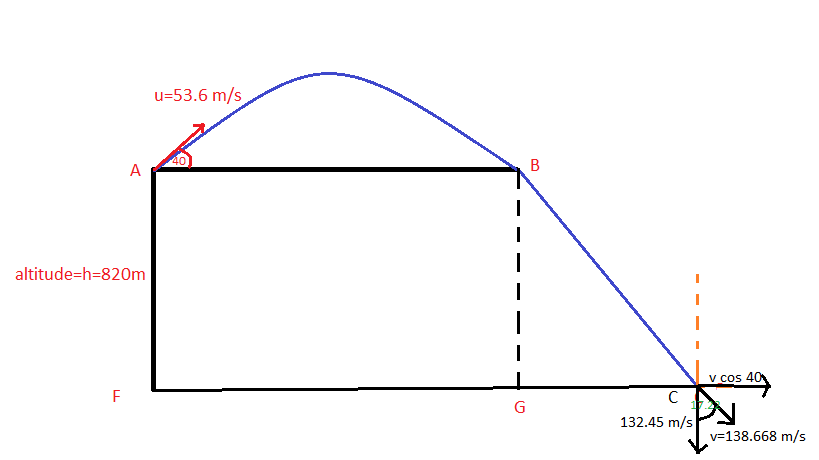An airplane with a speed of 53.6 m/s is climbing upward at an angle.....?
An airplane with a speed of 53.6 m/s is climbing upward at an angle of 40° with respect to the horizontal. When the plane's altitude is 820 m, the pilot releases a package.
(a) Calculate the distance along the ground, measured from a point directly beneath the point of release, to where the package hits the earth.
____ m
(b) Relative to the ground determine the angle of the velocity vector of the package just before impact.
____ ° clockwise from the positive x axis
An airplane with a speed of 53.6 m/s is climbing upward at an angle of 40° with respect to the horizontal. When the plane's altitude is 820 m, the pilot releases a package.
(a) Calculate the distance along the ground, measured from a point directly beneath the point of release, to where the package hits the earth.
____ m
(b) Relative to the ground determine the angle of the velocity vector of the package just before impact.
____ ° clockwise from the positive x axis
1 Answer
See the diagram,the package will follow the pathway shown below,

Considering the airplane is constantly rising at an angle of
So,at point A,
So,total distance travelled by the package,along ground is FC =AB+GC (from the diagram)
Now, AB= range of projectile motion =
Given
So, AB=
Now, vertical height=BG=
Here,
So,
So, GC =
So, GC =
So,total distance travelled along ground is (AB+GC)
Now, if during hitting the ground its velocity was
So,
So,net velocity while striking the ground is
So, w.r.t ground clockwise the angle of net velocity is

